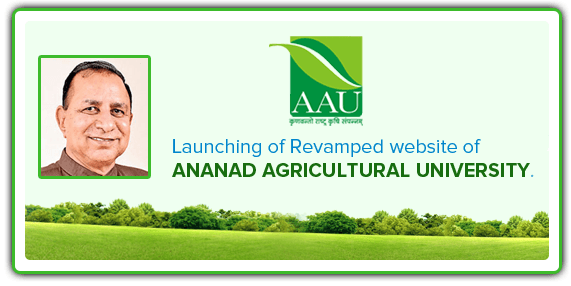Search
Latest News
Nematology
BRIEF INFORMATION OF THE DEPARTMENT
The Department of Nematology started in 1977-78 at Anand campus of erstwhile Gujarat Agricultural University with one post each of Professor, Associate Professor and Assistant Professor. Late Prof. H. M. Shah was the first Professor and Head, Department of Nematology who initiated the work on Nematology. There after array of distinguished professors viz., Dr. D. J. Patel, Dr. N. A. Thakar, Dr. V. A. Patel, Dr. R. V. Vyas, Dr. B. N. Patel, Dr. J. G. Patel, Dr. B. A. Patel and Dr. A. B. Brahmabhatt adorned this chair. At present, Dr. R. K. Thumar is performing as Head of the Department. The All India Co-ordinated Research Project (AICRP) on Plant Parasitic Nematodes with Integrated Approach for Their Control was sanctioned on 7th April, 1977 at Anand campus of Gujarat Agricultural University and the project started functioning on 8th February, 1978.
The department is fully engaged in imparting quality education to the P. G and U. G. students in the form of teaching, research and extension. Besides this, research on management of nematode diseases in different economic crops grown in the state and extension activities are conducted to appraise the farmers about the nematode problems in the crops and their remedies. From 1977 to till date, main focus of research is to identify several nematode problems, mainly root-knot, reniform, cyst, stunt, burrowing and many other parasitic nematodes on various crops and evolved their economic management strategies for the farming community.
MANDATES
- Knowledge acquisition to under-graduate and post-graduate students
- Guiding post graduate students for research work in different aspects of nematode management
- Identifying several nematode problems, mainly root-knot, reniform, cyst, stunt, burrowing and many other parasitic nematodes on various crops
- Cost effective nematode management strategies in nursery and field is demonstrated and included in Package of Practies (POPs) of the respective crop
- Creating awareness on known and new nematodes have been created through Krishi Mela, farmer’s shibirs cum exhibitions, Radio talks, TV etc.
Facilities of Farm / Lab
- Farm area of 1 ha land at Nematology Farm, B. A. College of Agriculture, AAU, Anand for conducting different field experiments related to the nematodes management as well as P.G. Research
- Well equipped Nematology Lab
- Well maintained Nematology Museum having 30-40 people’s capacity for training/teaching purpose
- Well maintained remarkable microplots to maintain different pure culture of nematodes
- Soil sample processing room for nematodes extraction
- Online Access Via You tube as learning source for UG and PG students
Detail Information About Activities and Achievements
- Teaching
- Research
- Recommendations and Scientific information
- Publications
- Post graduate students passed out
- Seminars/Conference/Symposia organized
- Awards
|
Name of Professor & Head (I/C) |
Dr. R. K. Thumar |
|
Qualification |
Ph. D. (Entomology) |
|
Contact |
09428489445 hodnematology@aau.in |

